Abstract: The anticorrosion mechanism of zinc-aluminum coating was analyzed. The importance of the top coat was verified by comparing the adhesion of the primer and the undercoat + topcoat in four aspects: coating adhesion, vandal resistance, salt spray resistance and friction factor stability.
0 Preface
Zinc-aluminum coating is a type of surface treatment developed to meet the environmental requirements of volatile organic compound (VOC) regulations and automotive industry regulations in various countries around the world. Zinc-aluminum coating has been widely recognized by the foreign automobile manufacturing industry for its excellent corrosion resistance and has been put into use on a large scale. However, there is no specific requirement for the coating structure in the application of zinc-aluminum coating in domestic automobile factories, which makes it difficult to achieve ideal corrosion resistance and stable friction factor for zinc-aluminum coated fasteners.
1. Anti-corrosion mechanism of zinc-aluminum coating
The zinc-aluminum coating, also known as the Dacromet coating, is an inorganic coating that superimposes ultra-fine zinc flakes and aluminum flakes in a special binder. The zinc-aluminum coating mainly protects the steel substrate from four aspects: physical shielding, cathodic protection, zinc powder passivation and self-repair.
1.1 Physical shielding
The treated scaly zinc and scaly aluminum layers overlap to form an effective barrier. Water, hydrogen ions and other corrosive electrolytes need to pass through a long corrosion path to reach the substrate, as shown in Figure 1. .
1.2 Cathodic protection
Since the potential of zinc and aluminum is lower than iron, the scaly zinc and aluminum sheets which are not completely wrapped are corroded as sacrificial anodes, providing cathodic protection for the steel substrate.
1.3 passivation
Special binders contain oxides and silicides that provide a slow release of corrosion, which reduces the corrosion rate of steel substrates and zinc and aluminum.
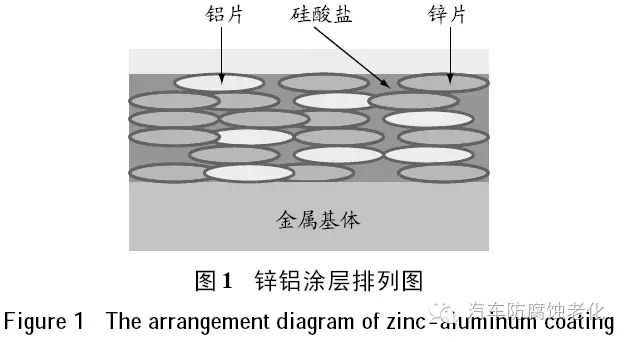
1.4 self-repair
When the coating is scratched, scratched or otherwise damaged (such as damage to tools during installation), the galvanic corrosion between zinc and steel accelerates the corrosion of zinc after exposure to corrosive environments, and the corrosion products are filled in The coating then reacts with carbon dioxide in the air to form insoluble zinc carbonate, which restores the "blocking" function and acts as a self-healing effect.
2, test methods
In order to verify the importance of the top coat in the zinc-aluminum coating, the adhesion of the primer and the topcoat + topcoat were compared in terms of coating adhesion, damage resistance, salt spray resistance and friction factor stability. In the test, a German company is currently the most widely used base coat A and top coat B in China. The composition of coatings A and B is shown in Table 1.
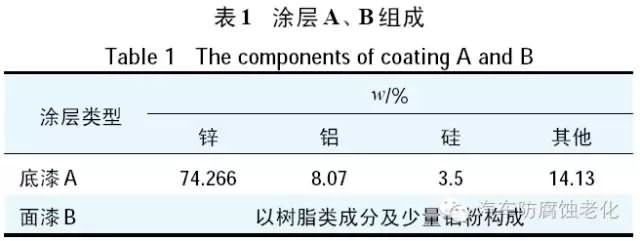
The test used M12×80 hex flange fastener with tensile strength of 1 000 MPa. It was coated with German WMV planetary coating machine. The coating structure was 2A (two primers) and 2A+B (two primers + one topcoat). The specific coating process is shown in Table 2.
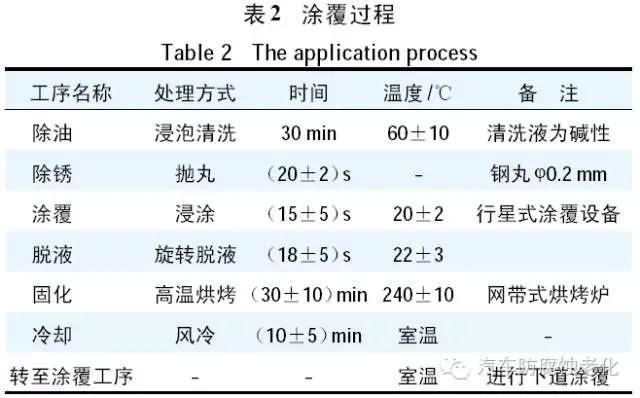
The coated fasteners were measured for coating thickness, and 3 points were measured and averaged. The results are shown in Table 3.
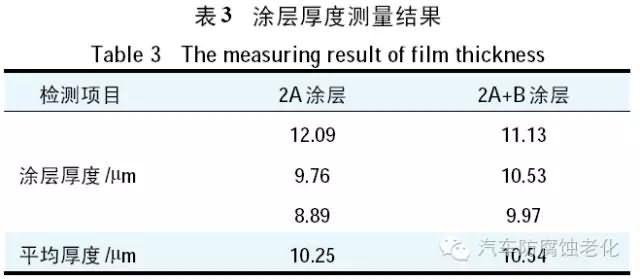
3. Test process and results discussion
It can be seen from Table 3 that the thickness of the 2A coating is substantially equal to that of the 2A+B coating, and the following coating properties are compared under the premise that the coating thickness is nearly equal.
3.1 coating adhesion test
According to the requirements of GB/T 5267.2-2002 standard, use 3M tape, firmly press the surface of the zinc-aluminum coated sample by hand, and then pull it perpendicularly to the surface of the sample to detect the peeling of the coating. Test 2A coating did not peel off significantly, while the tape had a small amount of metal powder; 2A+B coating did not peel off significantly, and the tape had no metal powder.
3.2 coating damage resistance test
For zinc-aluminum coated fasteners, some damage will be caused to the coating during the installation process. The coating failure rate is intended to characterize the ability of the fastener coating to resist damage during normal installation. Using a torque wrench, install the 2A, 2A+B coating samples according to the assembly torque (about 40 Nm), and analyze the composition of the damaged part by SEM (scanning electron microscope). The Fe content is 2.57% before the injury. Increasing to 53.03%, the coating damage has been deepened to the steel matrix. The damage area of ​​the coating was measured. The results showed that the 2A coating destruction rate was 17.8%, and the 2A+B coating destruction rate was 4.5%, as shown in Fig. 2.
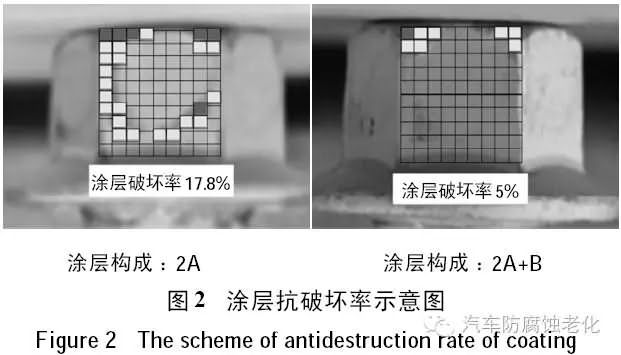
3.3 Neutral salt spray test
Neutral salt spray test is an important test method to consider the corrosion resistance of components. According to the requirements of GB/T 10125-2012 neutral salt spray test, the 2A, 2A+B coating samples were tested, and the sample state after 240 h, 480 h, and 720 h immersion was recorded. The 2A coating sample had no red rust for 240 h, red rust appeared at 480 h, and the red rust area of ​​720 h was further enlarged. No red rust was produced for the 2A+B coating samples at 240 h, 480 h, and 720 h.
3.4 friction factor stability test
20 2A coatings, 2A+B coating 9.8 grade M10X40 fasteners were taken respectively, and the above samples were tested by friction factor tester. The test results are shown in Table 4.
When the fastener is assembled with a torque of 40 Nm, the axial force Fmin of the 2A coated fastener is 12.0 kN, Fmax is 17.8 kN, and the ratio of the tightening axial force fluctuation to the average axial force deviation is about (17.8). -12.0) / (17.8+12.0) × 2 ≈ 38.9%.
When the fastener is assembled with a torque of 40 Nm, the axial force Fmin of the 2A+B coated fastener is 22.6 kN, Fmax is 26.6 kN, and the deviation of the tightening axial force is proportional to the average axial force deviation. (26.6-22.6) /(22.6+26.6)×2≈16.3%.
The relationship between the total coating torque and the tightening axial force is shown in Figures 3 and 4, respectively.
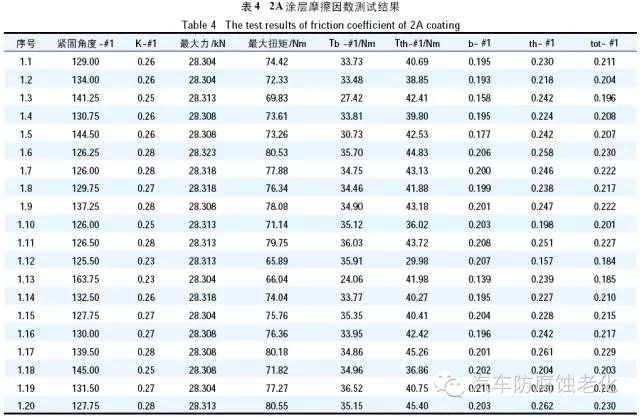
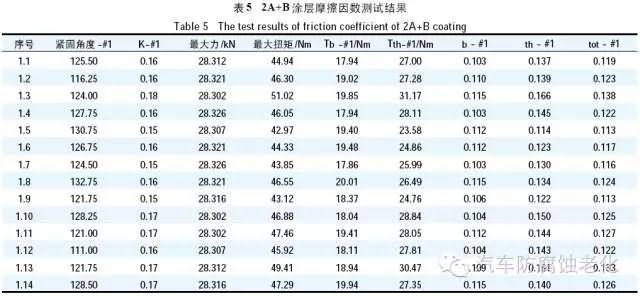

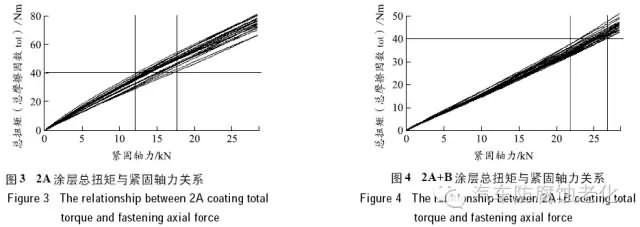
4, the conclusion
(1) The adhesion of zinc-aluminum coating to the substrate is high, which can effectively improve the coating damage during the fastener installation process. Since the top coating is mostly an organic coating mainly composed of epoxy resin and acrylic resin, the coating is reduced. The detachment of zinc powder and aluminum powder improves the adhesion and damage resistance of the zinc-aluminum coating.
(2) The increase of the top coat is to further protect the undercoat. Through the results of the neutral salt spray test, it can be found that the increase of the top coat at least delays the generation time of the red rust of the fastener by 240 h, thereby obtaining a more stable mechanical property of the fastener.
(3) Increasing the top coat can ensure that the fastener obtains a more stable axial force. When the zinc-aluminum coating has only the undercoat layer, the axial force fluctuates greatly due to the instability of the friction factor. The surface coating effectively improves the instability of the friction factor, resulting in a more stable axial force. Guaranteed stable axial force can effectively reduce the problems such as bolt breakage, bolt loosening, and parts vibration during the use of the whole vehicle.
Zhang Zhao, Wu Zhijie, Zhang Bing, Huang Wenmin (Technology Center of Great Wall Motor Co., Ltd., Baoding, Hebei 071000, China)
This article revolves around keywords: fasteners; zinc-aluminum coating; friction factor
Wood plastic screwdriver,wood screwdriver,good quality screwdriver,non-slip screwdriver
henan horn tools co.,ltd. , https://www.horntoolsltd.com
